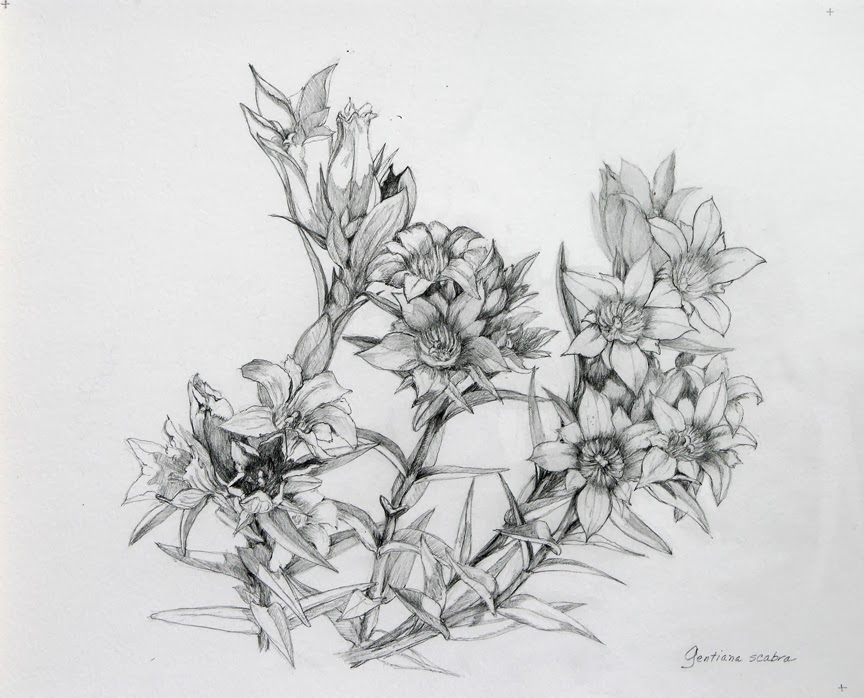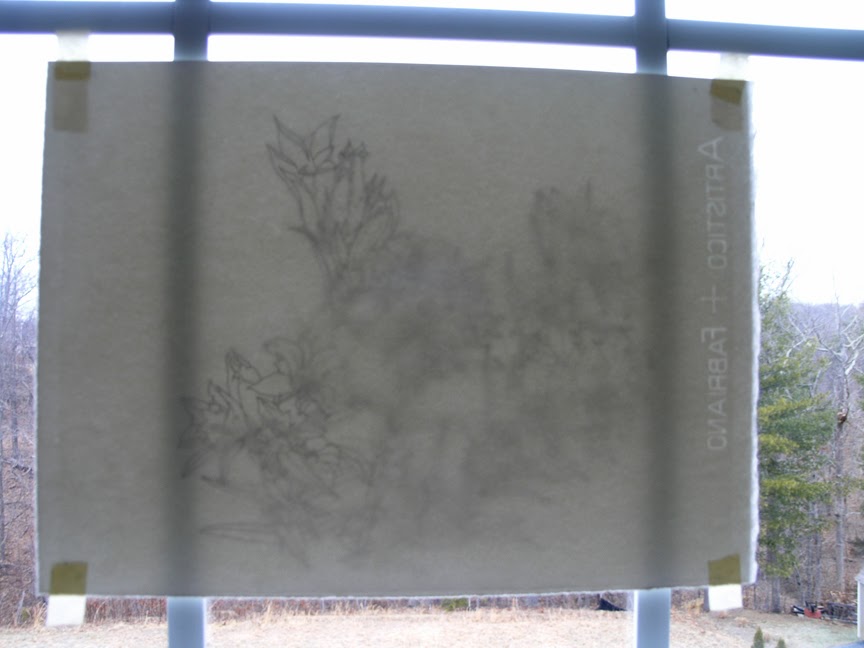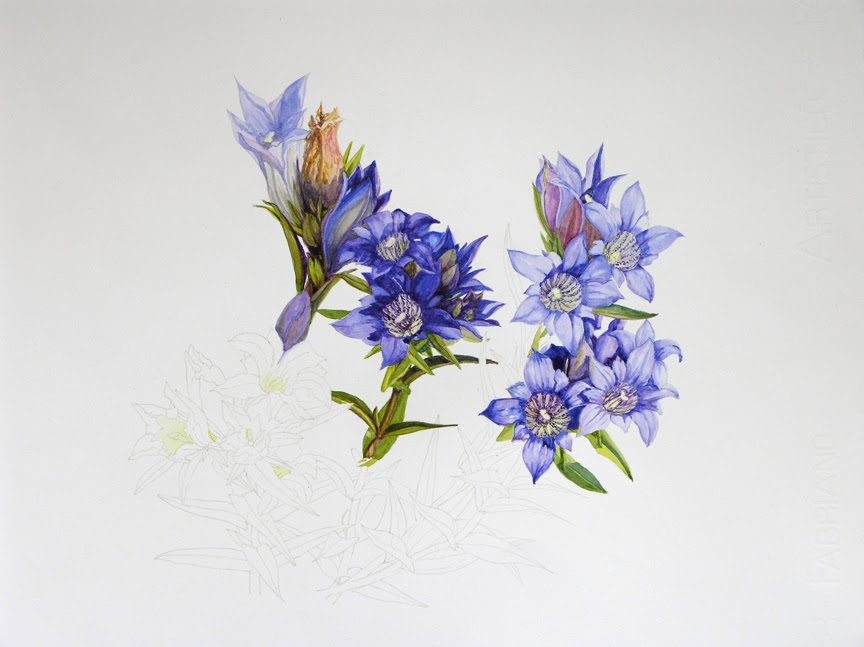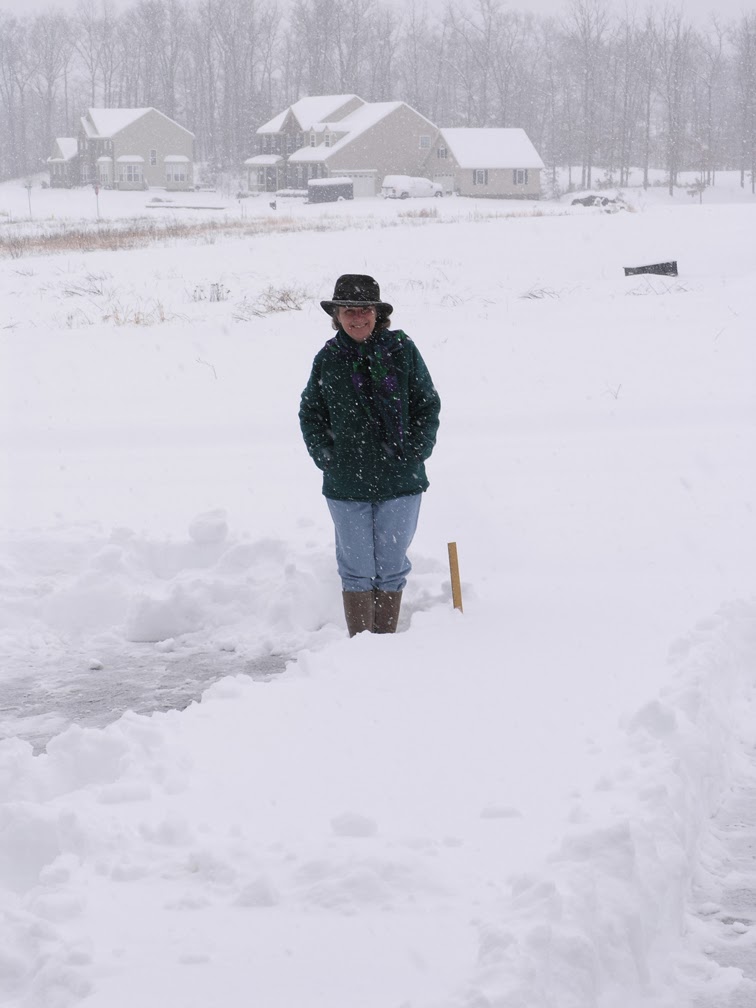 |
| Fertilized orchid flower. |
In the attempt to better understand the botany of orchids, I decided to hand-pollinate a couple of the orchids I have blooming around the house and observe what happens. I took one of my small painting brushes and detached the two tiny pollen sacs (pollinia) from the anther of one flower and deposited these on the stigma of another (the pollen sacs in the flower above were left intact). The pollen sacs seemed to have a sticky substance that gladly stuck to the stigma. I did this proceedure on two of the flowers of this unnamed species (the mystery hybrid purchased at a Florida roadside stand).
 |
| Compare fertilized orchid flower (on left) with unfertilized flower (on right). |
About four days later I looked and there were some noticeable differences between the flowers that had been fertilized and the others: the column had subtly changed color and appeared slightly swollen. The next morning I took these photos in bright light to look more closely--voila!
Comparing the fertilized flower on the left with the unfertilized on on the right, the most remarkable change was that the tiny appendages on either side of the column that forms a little bonnet over the anther had moved down to clasp each other and enclose the column. The fake "bee" formation on the labellum that lures and guides the pollinator had withered and lost all coloration, signalling to the prospective bee that the flower was now closed for business.
In fact, the color of the entire labellum had changed to a dark red and the petals and sepals were starting to become papery and thin, another indication the flower would wane soon. I wish I had a microscope-type camera that would allow me to photograph even more closely, perhaps look at a dissected flower to see what is going on inside, but that is beyond my budget at the moment.
 | |||
| Pencil sketch of the two orchid flowers. |





























